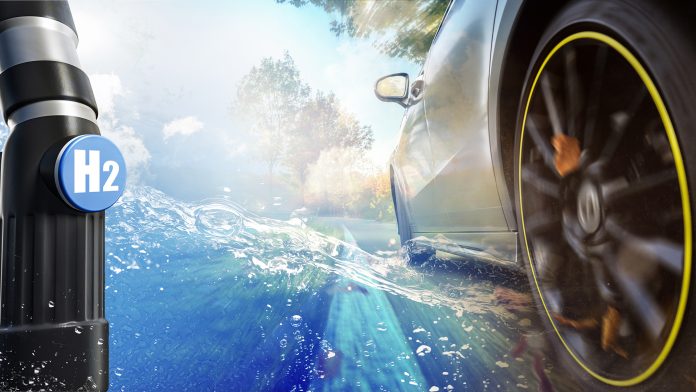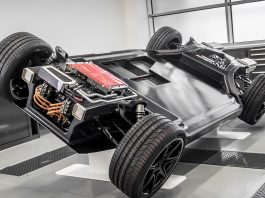Innovation News Network brings you the ultimate guide to zero-emission, hydrogen-powered light commercial vehicles and their instrumental role in driving global decarbonisation.
The transport industry has been under scrutiny for the last few decades due to its contribution to global warming and climate change. There is an urgent need for a revolution in this sector, with zero-emission vehicles considered the best solution. Hydrogen-powered light commercial vehicles could answer this problem and offer many advantages.
In this article, the Innovation News Network discusses how they can revolutionise the transport industry by providing clean energy solutions while increasing efficiency, reducing pollution, and lowering costs.
To understand why hydrogen-powered, light commercial vehicles are so effective, it is important to consider their environmental benefits first. The most obvious advantage is that these vehicles produce no emissions; instead of releasing pollutants like traditional combustion engines, hydrogen-powered cars emit only water vapour which causes no harm to our environment or health. Additionally, these vehicles have very low running costs since they require little maintenance, and their fuel needs recharging less often than when using petrol or diesel engines. Furthermore, their low weight means they use less energy than other vehicles, resulting in higher efficiency overall.
Finally, one of the main reasons zero-emission hydrogen vehicles can revolutionise the transport industry is because they make it easy for businesses to switch from existing models without investing heavily in new technology or equipment. They can provide substantial cost savings over time through lower running costs and reduced emissions, making them ideal for companies looking to reduce their carbon footprint while remaining competitive in their respective markets. These innovative machines are set to cause a huge shift within the transportation sector and open up new possibilities for efficient travel across land and sea alike.
An overview of hydrogen fuel cells
Hydrogen fuel cells are a form of energy production technology that utilises hydrogen gas to generate electricity. This type of power is created by converting chemical energy from hydrogen into electrical energy, with water as the byproduct. Fuel cell technology has been applied in various areas, such as transportation and stationary applications, for both residential and industrial uses.
Fuel cell components consist mainly of a membrane electrode assembly (MEA) and two catalysts: one anode catalyst facilitating oxidation reaction; another cathode catalyst enabling reduction reaction. The MEA serves as a separator between the two electrocatalytic reactions while allowing protons to pass through it so that electrons generated during the reactions can be collected via external circuits connected to electrodes on either side of the MEA.
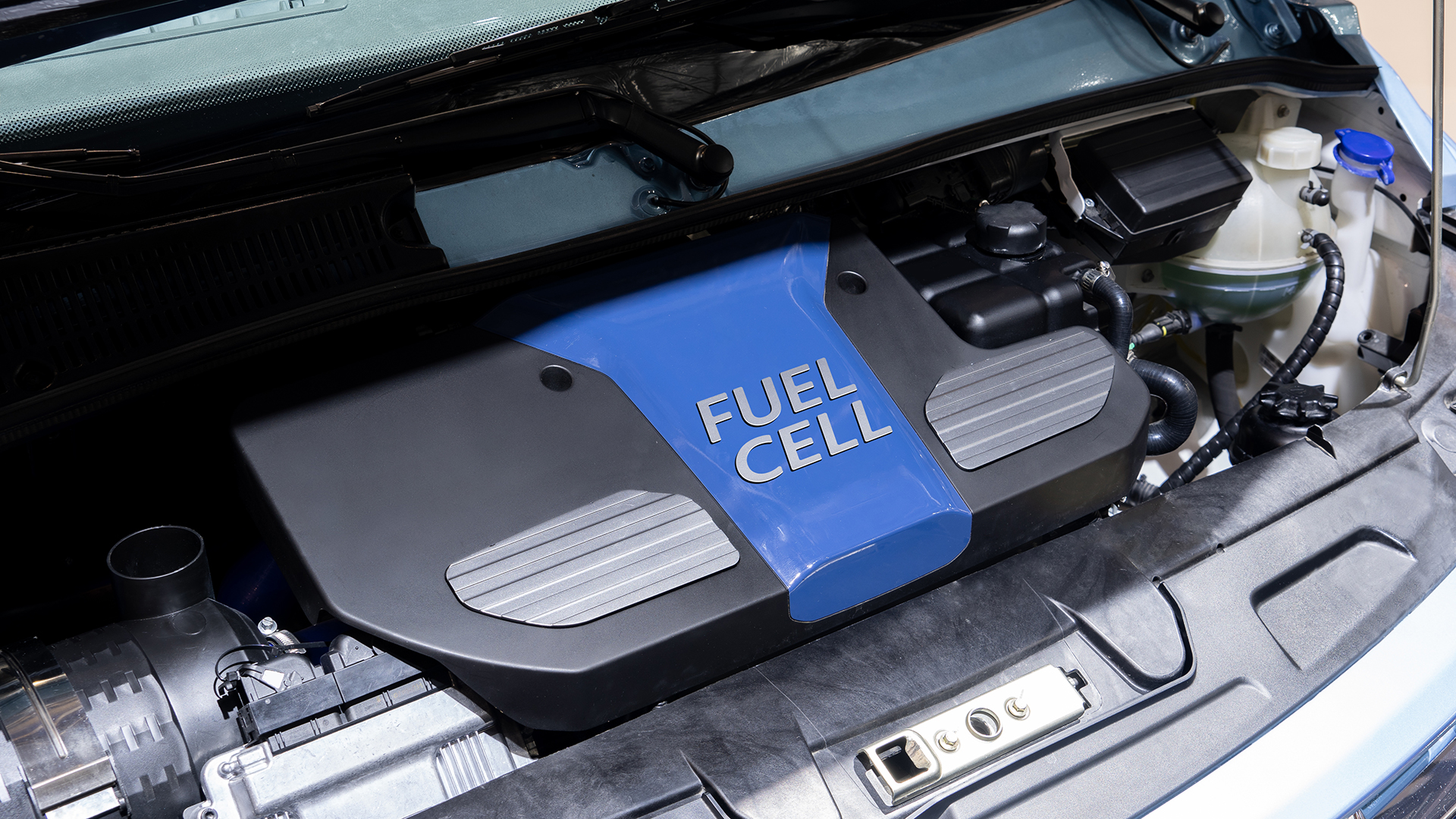
In recent years, there has been increased interest in using fuel cells for light commercial vehicles owing to their potential for reducing greenhouse gases associated with transport operations. Moreover, advancements in fuel cell technologies have made them much more efficient than before, enabling cost reductions and extended operational ranges for these types of vehicles – making them viable alternatives for many businesses across different industries. It is clear that implementing hydrogen-powered light commercial vehicles could revolutionise the transport industry.
What are the advantages of hydrogen vehicles?
Hydrogen light commercial vehicles offer low-emission and zero-emission performance advantages, clean energy production from fuel cells and improved fuel efficiency compared to other types of internal combustion engines. Additionally, they provide pollution-free operation as only water vapour is emitted when they are used.
Using a hydrogen-powered vehicle can result in significant cost savings for operators due to their higher fuel efficiency ratings. Hydrogen cars also typically require less maintenance than conventional gasoline or diesel vehicles because there are fewer components that need frequent servicing or repair. Furthermore, since these vehicular systems operate on pressurised tanks containing compressed gaseous hydrogen, their range is generally greater than electric vehicles (EVs) with comparable battery capacity.
Regarding safety, hydrogen fuel cell technology has been extensively tested and found reliable by organisations such as NASA and automotive manufacturers like Toyota and Honda. The tanks used in some models are constructed from composite materials, making them lighter yet stronger than traditional steel containers. These lightweight tanks reduce total vehicle weight resulting in better overall performance while providing an effective barrier against leaks and puncture damage, even under extreme conditions.
Overall, using hydrogen-powered light commercial vehicles offers many benefits, from lower emissions to increased safety measures, superior fuel efficiency, and reduced maintenance costs compared to traditional engine designs. As more companies continue investing in this emerging form of transportation, it will become increasingly available for various applications ranging from small businesses to large fleets helping accelerate its widespread adoption across the transport industry.
Are there disadvantages to the technology?
The use of hydrogen-powered light commercial vehicles is not without its drawbacks. The cost associated with producing and maintaining these vehicles and their refuelling infrastructure remains a major obstacle to widespread adoption. Though they generate no pollutant emissions, hydrogen fuel cells are often hampered by durability problems due to rapid degradation caused by water formation and carbon deposition in the electrodes. Furthermore, an inadequate renewable integration into the energy grid means that much of the hydrogen used for fuelling still comes from non-renewable sources such as natural gas.
These disadvantages include the following:
- High cost;
- Poor refuelling infrastructure;
- Fuel cell drawbacks;
- Pollutant emissions from non-renewable sources; and
- Inadequate renewable integration.
For these reasons, further research must address some of these issues before hydrogen-powered light commercial vehicles can become viable alternatives to traditional combustion engines. However, significant barriers prevent large-scale take-up despite this technology’s environmental benefits.
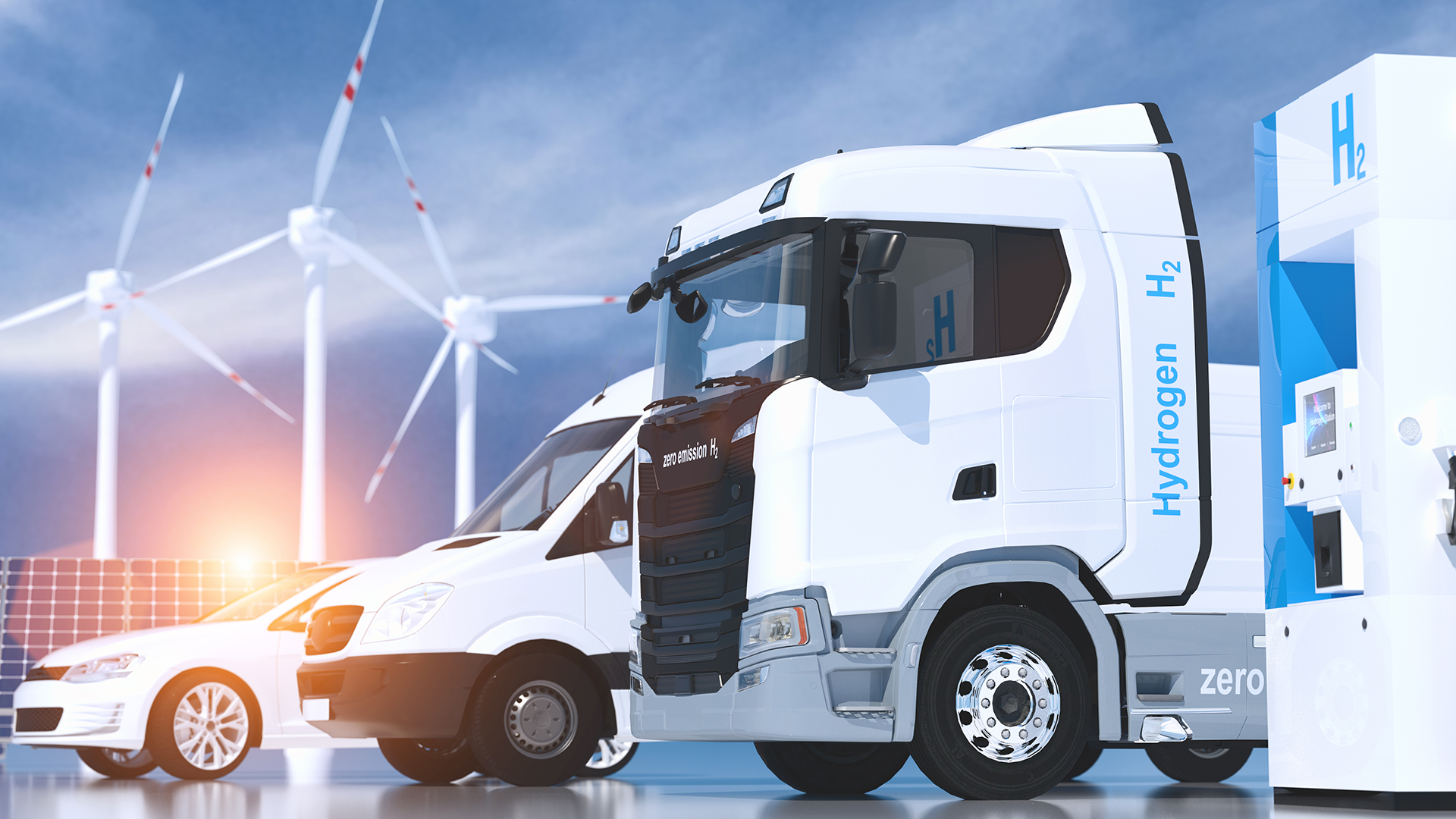
Cost benefits of hydrogen vehicles
The cost-benefit of hydrogen-powered light commercial vehicles is evident, and the financial benefits in terms of cost reduction and economic advantages are considerable. Cost savings can be achieved through these vehicles’ purchasing and maintenance costs, as well as renewable energy sources for fuel generation and storage.
Hydrogen-powered vehicles offer an attractive opportunity for businesses seeking to reduce their environmental impact without sacrificing operational performance or incurring additional expenses. The overall financial benefits of this type of transportation solution make them an ideal choice for organisations looking for long-term sustainability gains when it comes to transport investments. Additionally, the potential cost savings from reduced fuel consumption combined with a longer lifespan allow businesses to enjoy the full benefit of their investment over time.
Challenges to adoption
Imagine a world in which the transport industry relies solely on hydrogen-powered vehicles – a utopia of sorts, where noise pollution is non-existent, and air quality is pristine. Such an idealistic dream may seem out of reach for many today due to various challenges that prevent the widespread adoption of hydrogen fuel cell technology and its light commercial vehicles.
The primary barrier preventing extensive use of these clean energy solutions is scalability. Hydrogen technology must become much more cost-effective before competing with traditional methods such as diesel engines. Additionally, technological advancements are required to make refuelling times faster and batteries lighter so that range anxiety will not present itself as another roadblock towards adoption.
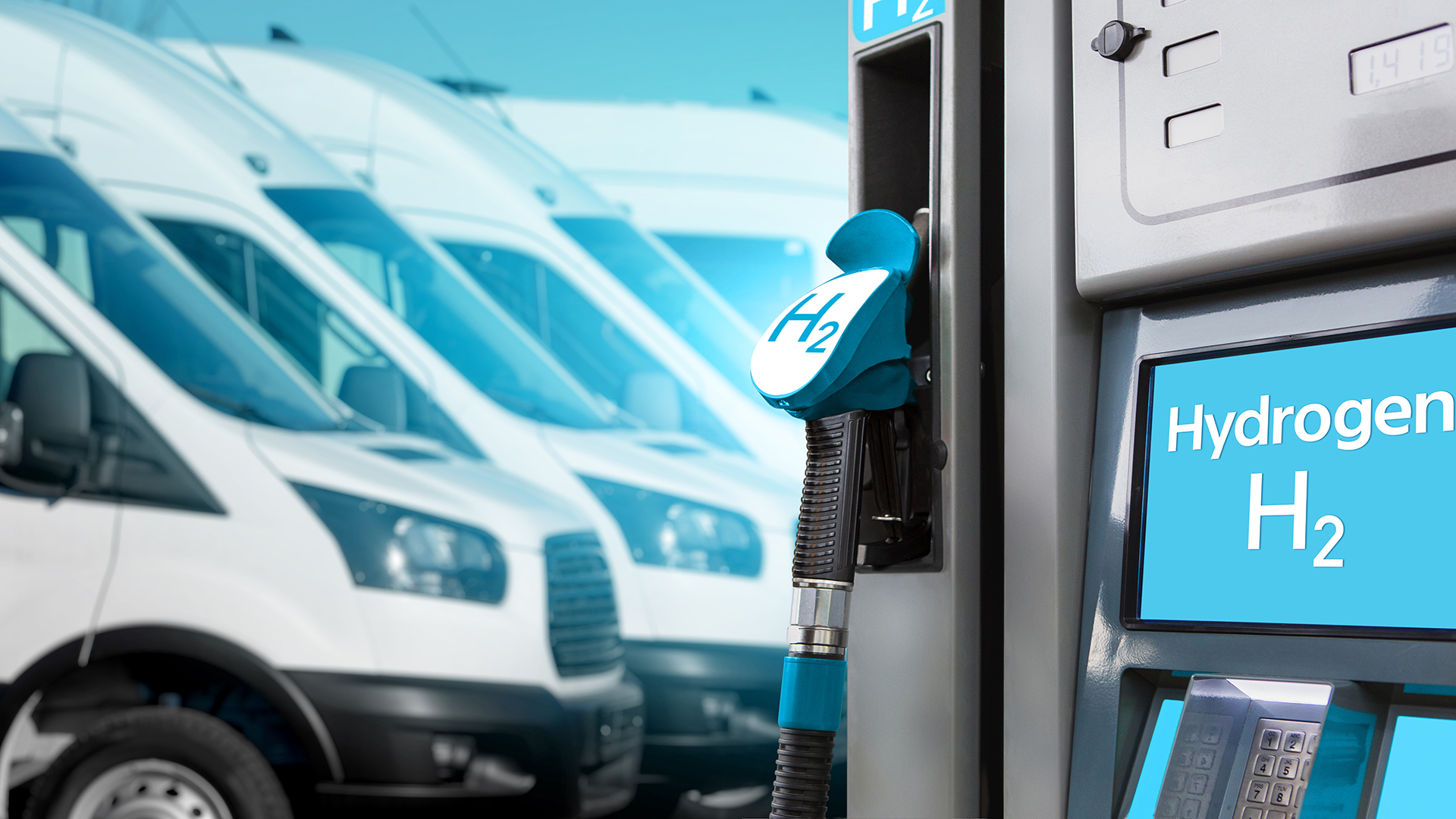
In addition to technological issues, infrastructure remains an issue given the lack of available fueling stations across the country or even globally. For hydrogen vehicles to gain traction, investments into green infrastructure need to be made to provide consumers with convenient access points for their vehicles’ needs.
Finally, widespread acceptance from consumers and businesses alike is necessary if we hope to revolutionise our transport industry through the power of hydrogen vehicles. Doing this requires educating the public about how these vehicles work and convincing them that they are reliable enough for everyday use. With continued investment in research and development and increased consumer education, perhaps one day, these barriers can be overcome, resulting in greater global sustainability potentials than ever imagined.
Safety concerns
The adoption of hydrogen-powered vehicles has the potential to revolutionise the transport industry. However, safety concerns are a leading factor in their acceptance by consumers and legislators alike.
The following three points provide insight into the relative safety of these vehicles:
- Hydrogen safety: To ensure public safety when using hydrogen fuel cells, careful measures must be taken to contain any released gas and avoid leakages at all costs. An appropriate monitoring system must also be established to detect leaks or other potentially hazardous scenarios;
- Fuel cell safety: Though its components may vary depending on the supplier and vehicle type, modern fuel cells have improved significantly in terms of reliability and performance over time, with enhanced sensors for monitoring pressure levels and introducing temperature controls recently. This increased level of safety gives drivers greater peace of mind when operating a hydrogen-powered vehicle.
- Transportation safety: As with any transportation, certain precautions must be taken regarding driver distraction and fatigue, among other factors. In particular, hydrogen-powered light commercial vehicles may require additional training for operators due to their unique power source compared to traditional combustion engines.
Combined, these considerations demonstrate that while there are legitimate concerns surrounding introducing new technology into widespread use within the transport industry, adequate research and precautionary steps can lead to safer practices that benefit everyone involved in this process.
Refuelling infrastructure requirements
Developing an effective refuelling infrastructure to support the widespread adoption of hydrogen-powered light commercial vehicles is critical in revolutionising the transport industry. The requirements for such an infrastructure differ from those used for conventional fuel due to the different properties of hydrogen fuel and its storage needs. Therefore, when planning new refuelling stations or expanding existing networks, there must be careful cost analysis to ensure that any investments are justified given the potential demand.
Various aspects need to be considered when developing these infrastructures, including safety considerations, access control, and automation systems. Refuelling processes should also be considered to provide convenient options that promote user acceptance and uptake of hydrogen vehicles over traditional petrol-based cars. Additionally, it would be beneficial if connections could easily be established with other energy sources, such as renewable electricity grids, for additional efficiency gains.
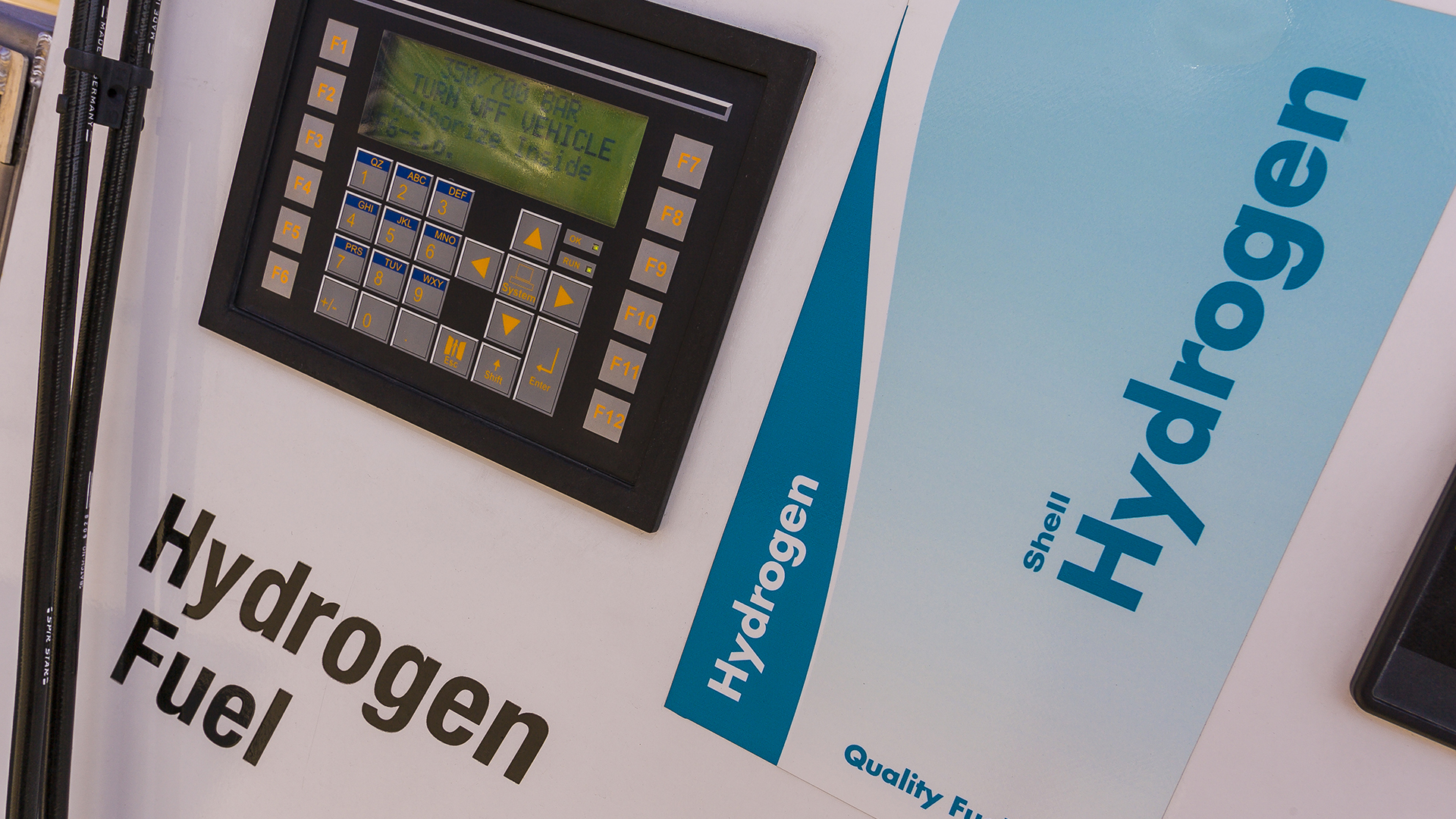
When deploying an effective fuelling infrastructure for hydrogen-powered light commercial vehicles, any investment decisions must consider long-term operation and construction costs. Such decisions will ultimately determine how quickly this type of vehicle technology can become mainstream, allowing users to benefit from their efficiency and environmental friendliness. Furthermore, governments may decide to invest in incentive programmes or tax incentives specifically designed around encouraging the use of more sustainable forms of transportation to accelerate network expansion across wider areas.
A comprehensive approach towards establishing suitable refuelling infrastructure is required to realise the full potential benefits of hydrogen vehicles. This involves considering all relevant factors associated with building efficient and safe refuelling networks while providing sufficient incentives to encourage uptake among consumers and businesses.
Impact on air quality
The introduction of hydrogen-powered light commercial vehicles will undeniably impact air quality. As more and more people switch from traditional combustion engine vehicles to these cleaner alternatives, the overall level of pollution in our atmosphere will be reduced significantly. Hydrogen is a clean source of fuel that does not create any carbon emissions when burned; therefore, it can help reduce both greenhouse gas emissions and local pollutants such as nitrogen oxides and particulate matter. This would improve air quality and public health outcomes for all citizens, especially those living in urban areas where air pollution levels are often higher than in the rest of the country.
Due to their lack of tailpipe emissions, hydrogen-powered vehicles could provide additional benefits beyond just improving air quality. For example, they could result in fewer traffic-related fatalities since fewer exhaust fumes are present, which can cause respiratory issues or other illnesses over time. Additionally, by reducing noise pollution from engines running at high speeds and eliminating dangerous fumes that come with petrol-run cars, citizens’ streets will become much safer places to walk around or cycle.
With every passing day, we are seeing increasing awareness surrounding environmental issues and climate change; hence why using renewable energy sources like hydrogen has also grown in popularity. Introducing hydrogen-powered light commercial vehicles into the transport industry offers an exciting opportunity for us to move closer towards creating a cleaner future with better air quality levels – one that everyone should strive towards achieving together.
Potential for renewable energy integration
The potential for renewable energy integration with hydrogen-powered light commercial vehicles is immense. Hydrogen-renewables and renewable-hydrogen systems are becoming increasingly viable options for transportation, as they offer the possibility of reducing emissions while promoting sustainable mobility. The use of hydropower in combination with fuel cells can generate electricity that can be used to power EVs. In addition, wind power can also be harnessed to drive electric motors, thereby allowing zero-emission transport solutions.
Furthermore, these technologies could also provide an alternative energy source for other sectors, such as industry or agriculture. For example, using a combination of solar photovoltaic and fuel cell technology could enable farmers to produce their electricity without relying on conventional sources of energy. This would reduce their dependence on fossil fuels and help them become more self-sufficient in energy production. Additionally, industries which rely heavily on gas turbines could benefit from using a hybrid system incorporating renewables and hydrogen fuel cells instead.
The integration of renewables into vehicle propulsion systems is expected to impact the environment and the economy positively. Using clean energy sources reduces emissions significantly over time due to fewer pollutants being released into the atmosphere. Furthermore, by replacing traditional fossil fuels with renewable alternatives, there will be cost savings associated with not purchasing expensive gasoline or diesel. Finally, transitioning from conventional forms of transportation towards greener alternatives will likely lead to increased public awareness concerning environmental issues and their effects on society.
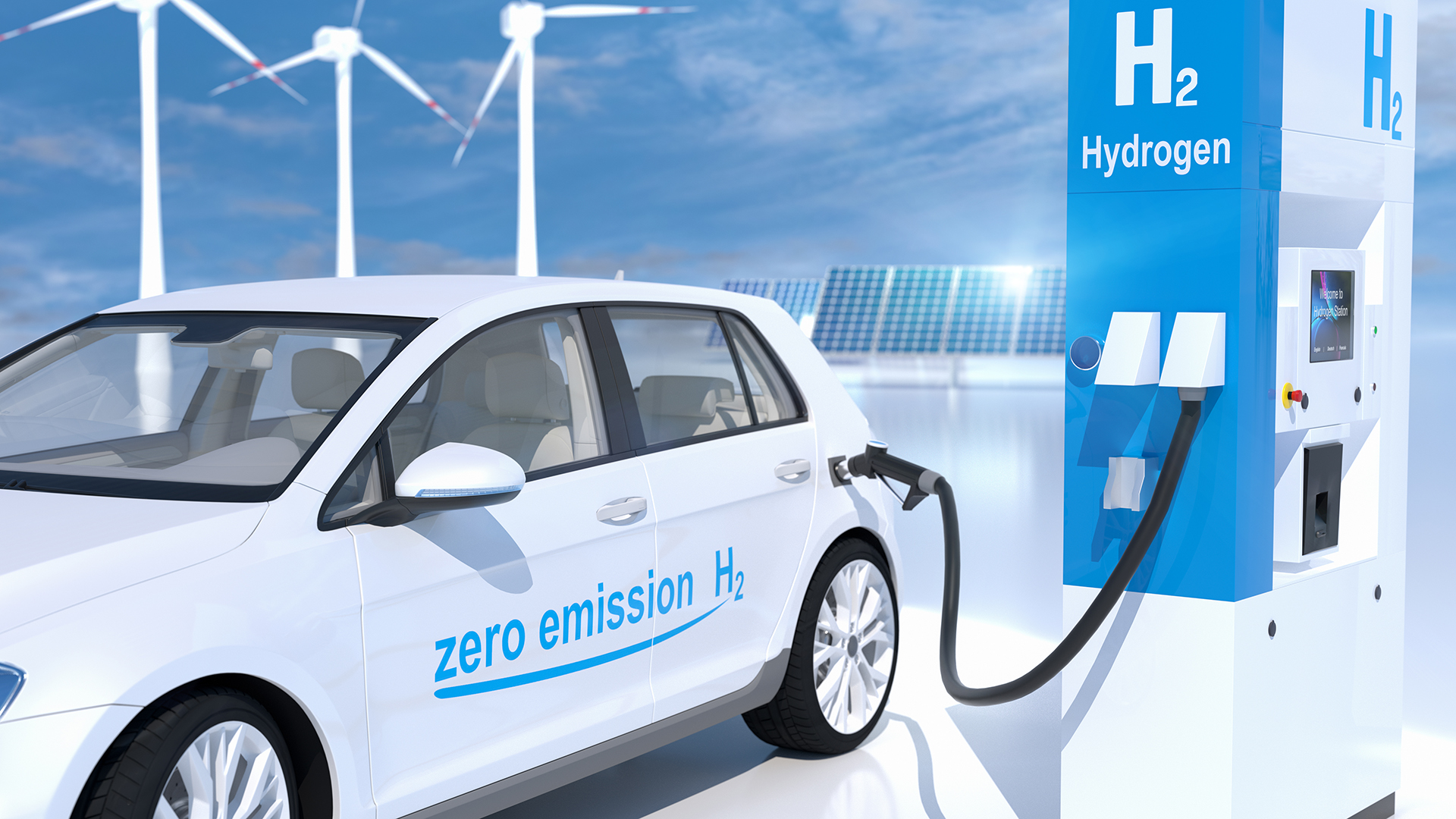
In summary, integrating renewable energies with hydrogen-powered light commercial vehicles has many advantages, including improved air quality resulting from reduced emissions, lower costs associated with eliminating reliance on costly gasoline or diesel, and greater public consciousness about environmental issues. With further development and support from governments worldwide, this type of innovation may soon revolutionise the transport industry
Recent developments in hydrogen vehicle technology
As technology advances, developments have made it increasingly possible to utilise hydrogen as a viable option for powering vehicles. These developments are helping to make hydrogen-powered light commercial vehicles more accessible and efficient than ever before. Advances in technology, such as increased availability of hydrogen fuel cells, lighter and more affordable components, improved battery technology, and enhanced sensors and controls, are all contributing to lowering costs while improving performance.
The use of advanced sensors helps improve safety measures by allowing drivers to detect if any leaks occur during operation. By accessing reliable information regarding vehicle conditions at any given time, operators can respond quickly to minimise risks posed by hazardous materials. This technological advancement provides many opportunities for the transportation industry to move towards greener solutions without sacrificing performance or reliability. With further advancements still yet to come, it is clear that hydrogen-powered light commercial vehicles will continue their role in transforming how we travel into the future.
Regulatory considerations
Transitioning from technological advances, regulatory considerations are a key factor that must be considered for hydrogen-powered light commercial vehicles to revolutionise the transport industry. To ensure success, there needs to be an effective and efficient regulatory framework that encourages market uptake of such vehicles while also protecting public health and safety.
The following points should be considered when developing this framework:
- Government incentives: The government should provide monetary or non-monetary incentives to encourage the adoption of these vehicles. Examples include tax credits, subsidies, grants and other forms of funding;
- Policy implications: Policymakers must understand how new technologies may affect existing regulations and laws. For example, if the vehicle has a lower emissions rating than those already allowed on roads, then additional policies may need to be implemented to allow them access;
- Legal requirements: Local governments should review any legal requirements related to these vehicles as they could impact their use within city limits. As most states require certain levels of environmental compliance, it is essential to consider whether current standards can accommodate hydrogen-powered light commercial vehicles before allowing them to operate within state borders; and
- Incentive programmes: Governments may also develop incentive programmes with objectives such as increasing consumer demand or encouraging businesses to invest in alternative fuel sources. Providing financial assistance through such programmes will encourage more people to purchase hydrogen vehicles, leading to greater market penetration and ultimately helping revolutionise the transport industry.
Ultimately, robust regulation is necessary to successfully implement hydrogen vehicles at scale to positively contribute towards reducing air pollution and improving overall sustainability without compromising safety or convenience.
Socio-economic implications
The socio-economic implications of hydrogen-powered light commercial vehicles can potentially transform transport industries across the globe. According to a recent study, 57% of all carbon dioxide emissions in Europe are attributed to road transportation. Hydrogen vehicles can help reduce these emissions and achieve sustainable development targets worldwide.
In terms of economic benefits, hydrogen vehicles can provide reduced operational costs for businesses that choose to make use of them. This is because they offer better efficiency thanks to their improved mileage compared to traditional combustion engines. Moreover, lower fuel prices can be expected when using hydrogen vehicles since they do not require gasoline or diesel fuels during operation. Additionally, increased energy security could be achieved through renewable sources such as solar or wind power, which would be used to generate electricity for charging batteries to power these vehicles.
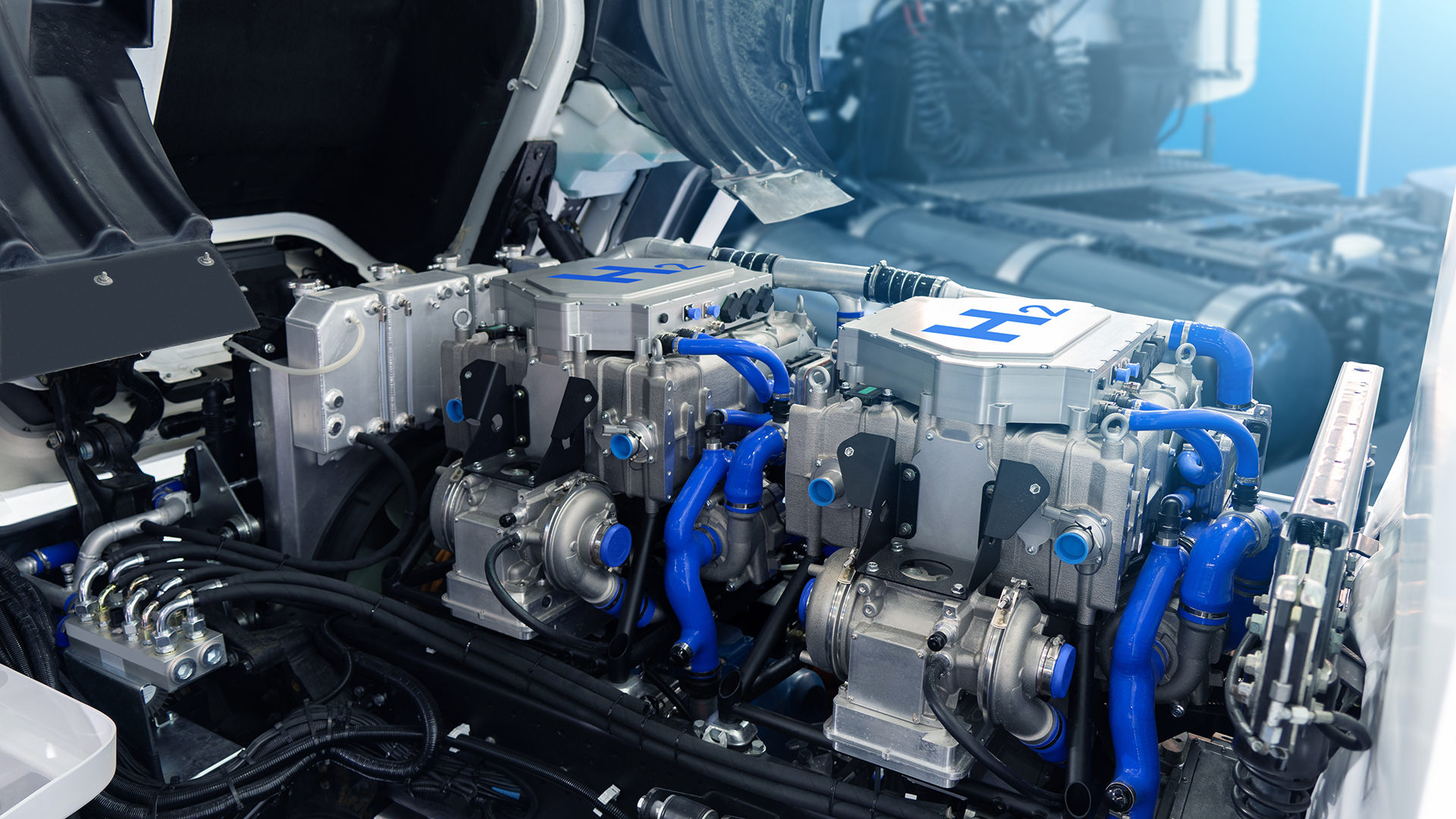
On the other hand, there are also several social costs associated with hydrogen vehicles. Firstly, environmental damage may occur due to the production process required for making these cars which might involve hazardous materials and chemicals like lithium-ion batteries. Secondly, employment opportunities may diminish if they become more popular than traditional combustion engine models due to displacement effects caused by technological advancements. Finally, potential health risks should also be considered when discussing using hydrogen storage tanks onboard certain types of hydrogen vehicles with combustible gas capable of causing explosions under certain conditions.
It is clear then that there are numerous advantages related to adopting hydrogen-powered light commercial vehicles into our society. Nevertheless, we must consider both sides of the argument before investing time and resources into large-scale implementation projects to reduce greenhouse gas emissions from transportation activities globally.
The future outlook for hydrogen vehicles
Looking to the future, it is clear that hydrogen-powered light commercial vehicles are set to revolutionise the transport industry. These vehicles offer a number of advantages over traditional diesel and petrol-powered engines, such as improved fuel efficiency, environmental friendliness, and greater reliability. As more countries move towards carbon neutrality and electric vehicle mandates come into force in many regions, the demand for these types of vehicles will inevitably increase. This trend is already being seen in Europe, where market research suggests an increasing preference for hydrogen-fuelled cars over conventional petrol or diesel alternatives.
In addition to increased public demand, governments around the world have begun investing heavily in infrastructure for producing and distributing hydrogen fuel. This includes dedicated production facilities as well as pipelines for delivery and storage. Such measures could provide further impetus to the growth of this sector in the coming years, allowing businesses and consumers alike to benefit from its advantages.
The development of new technologies, such as advanced battery packs with longer-range capabilities, may also play a role in accelerating adoption rates by offering even greater convenience than current models can provide. Furthermore, government subsidies on automotive purchases could encourage uptake at both the consumer level and within fleets operated by larger companies that wish to go green but cannot afford expensive upgrades due to budget constraints.
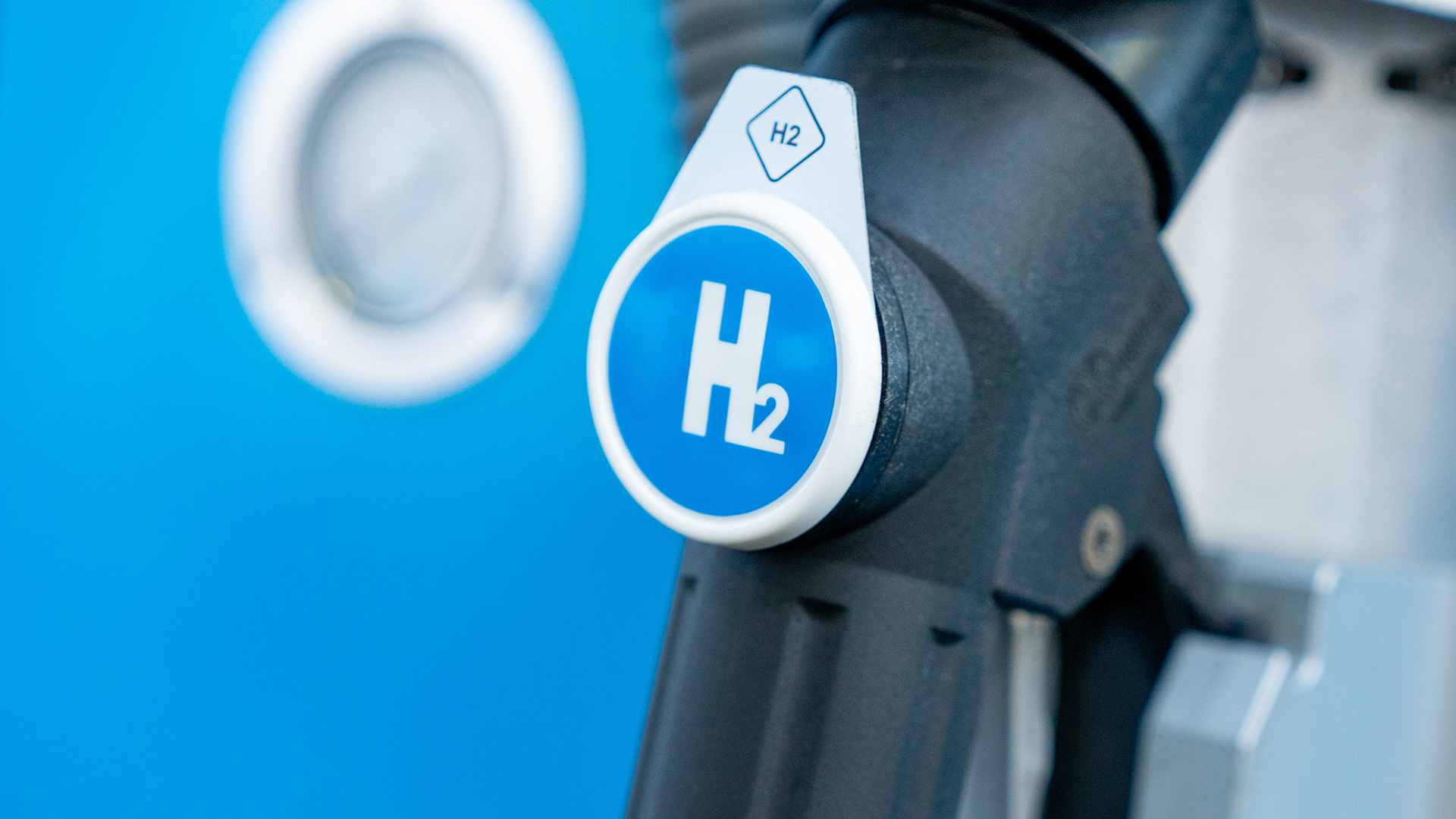
It appears likely that hydrogen-powered light commercial vehicles will soon become commonplace throughout much of the developed world if trends continue along their current trajectory. With continued technological advances coupled with increasingly supportive policy frameworks from governments worldwide, it is possible that these vehicles could drastically reduce global emissions levels while simultaneously improving transportation efficiency across all sectors within a relatively short period of time.
Society stands to benefit greatly from the adoption of hydrogen-powered vehicles through improved air quality and decreased noise pollution levels. In turn, this would lead to healthier populations and more efficient urban mobility systems – outcomes with far-reaching social repercussions that simply cannot ignore. By taking a holistic approach to analysing all aspects related to hydrogen vehicles, we can look forward to a brighter future on our roads filled with these revolutionary machines!

